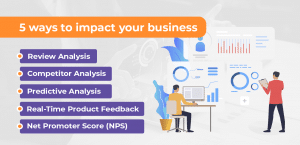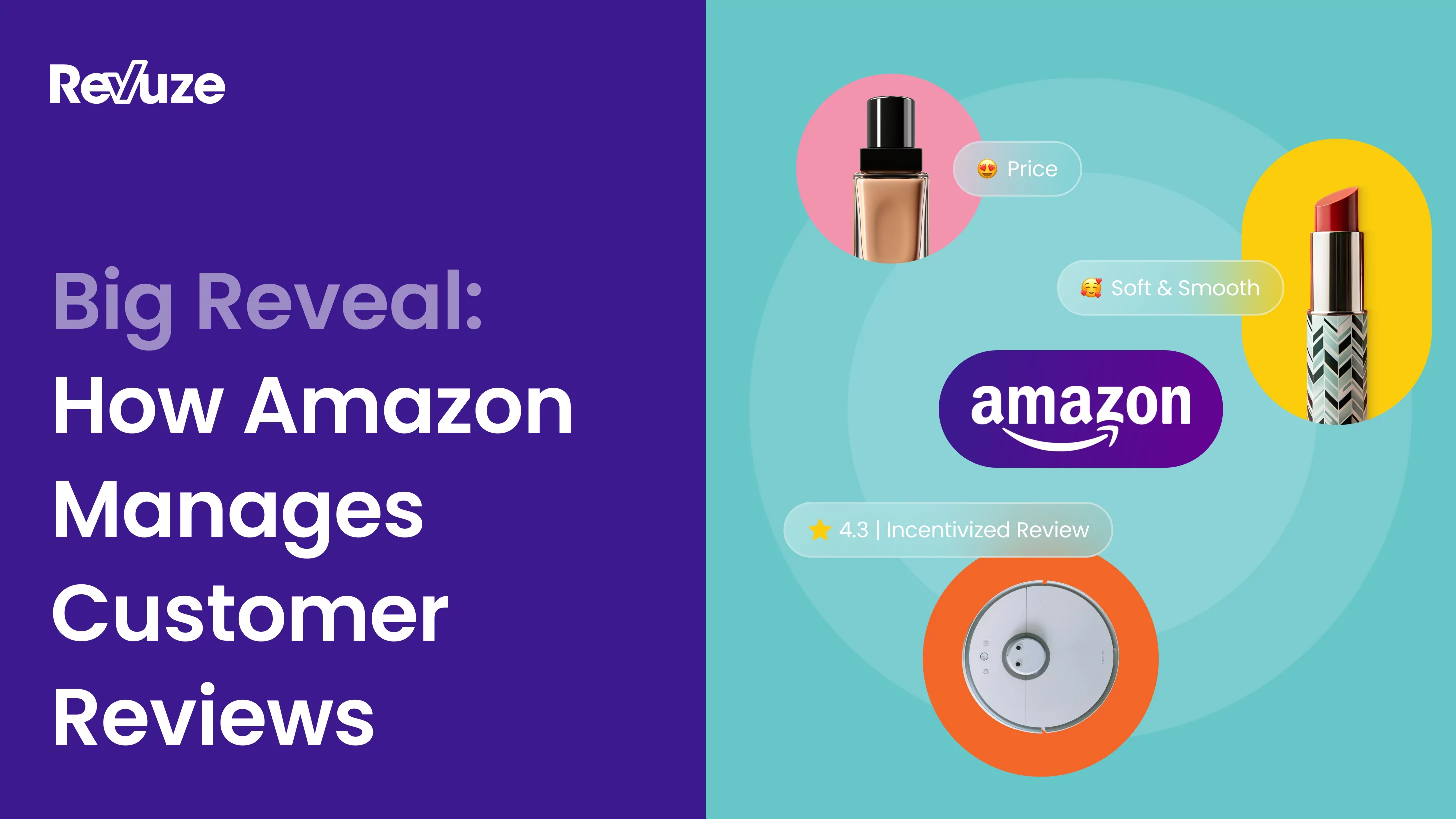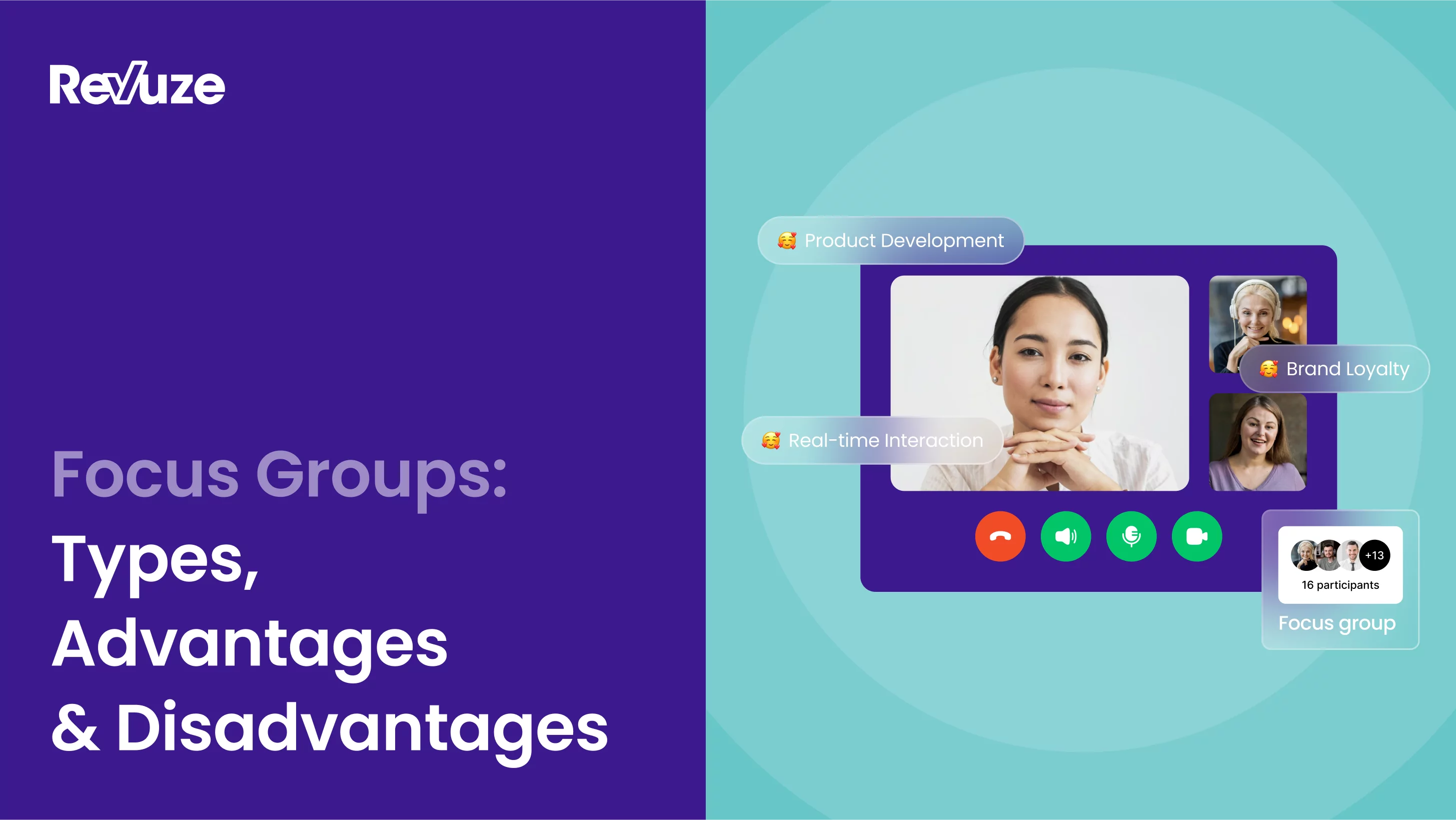
In today’s ultra-competitive market, all corporate executives need to base their decisions on solid research, data, and information; this way, every move they make will be based on informed decisions and will be more likely to help them succeed and thrive. Top Executives, Product Managers and Customer Analytics Managers seek to collect big data and analyze their customer base and their competition’s moves.
In this article, we will explore some important topics, such as “customer analytics,” “customer experience,” and “competitor analysis.” These tools can help you learn more about your market, your competition, and ultimately will allow you to make smart predictions and base your key decisions on solid and reliable information and create meaningful business impact. We will also list different ways that you can use big data customer analytics to impact your business’s results.
What Is Customer Analytics?
Customer analytics is a process that allows you to use data retrieved from your customers’ behavior to make smart and well-informed business decisions. Through customer analytics, you can apply market segmentation and predictive analytics for your marketing operations and to manage your relationship with your customer base; besides marketing purposes, it’s also used for product analytics, new product launches, and to get product ideas.
By analyzing the behavior of your customers—e.g. the way your customers are navigating your website or using your software/dashboards, or the way they’re approaching real-life consumer goods, which products they prefer, which devices they use and for how long, and so on—you can start segmenting your customer base into different categories of customers and then predict the behavior of future customers depending on some defining factors.
You can easily imagine the incredible advantage you can have if you’re familiar with your customer base and you’re able to predict customer behavior.
What Is Customer Experience (CX)?
The letters “CX” stand for customer experience; the analysis of customer experience is a method to measure whether a product or service meets the expectations of the customers who have purchased it already. In order to do that, of course, listening to the Voice of Customer (VoC) is fundamental.
Improving customer experience is done by delivering the best experience to your customers, which goes beyond offering a good product or service. Why is that so important? It’s important if you want to beat your competition and retain your current customers.
According to a report published by the consulting firm Walker, customer experience is now becoming more important than the product itself or its price. The report reads that, “today, B2B companies focus primarily on differentiating themselves through the experience they deliver to customers. This strategy will grow in importance, while differentiating on products and price will become less important.”
As we mentioned earlier, knowing your data is crucial to executives in order to make healthy business decisions. Which data should you be looking out for? And which tools can help you make the most out of it?
We’ve listed the top 5 ways big data consumer analytics can impact your business results.
1. Review Analysis
Reviews are another excellent data resource worth taking advantage of. Reviews roll in often, so you should watch out for them on a regular basis; depending on your product or service, they’re likely to be on Google, the App Store, Yelp, Tripadvisor, and so on.
Reviews are important because they give you lots of information on customer experience and satisfaction and, more broadly, they often mirror the Voice of Customer. Customers express their opinions and sentiments—which may be positive, neutral, or negative—giving you an insight into their experience but also impacting the business by either recommending it or criticizing it publicly.
An automated software can go through all the reviews and analyze them for you, giving you a snapshot of the overall “sentiments” people feel about the product/service. This type of software applies machine learning to gain insights that can help executives make decisions on real users’ feedback.
The technology behind it involves text analytics (an automated process used to analyze a piece of writing and extract useful information from it) and sentiment analysis (the automated process used to analyze a text and interpret the sentiments behind it.) Sentiment analysis will help you classify reviews as positive, negative, and neutral.
2. Predictive Analysis: Predicting Customer Needs
Until recently, consumer data analytics was a slower process and therefore it was used to analyze the past. Today, there are several tools that allow you to use the data in real time. So, instead of only looking backwards, executives are using artificial intelligence (AI) and machine learning software to predict what certain customers will want in the future.
Many executives, especially in the e-commerce sector, are already applying these analytics softwares to their websites. When customers shop online, these tools will register data about their online behavior, their shopping habits, their favorite products, and so on; this way, they’ll predict which products customers might be interested in and when they might want to re-purchase an item. Beauty companies like Sephora are known to use this type of technology.
Predictive Analysis uses large volumes of customer data to predict customer needs and improve their experience by personalizing it.
3. Real-Time Product Feedback
If Predictive Analysis is about improving future customer experience by using consumer data, Real-Time Product Feedback works… instantly.
Through this feature, a website or product can adapt to its customers’ needs in real time as it observes the way its customers use the product or service. This tool is widely used, for example, by online streaming platforms like Netflix and Spotify, which are constantly striving to learn more about your taste and preferences to personalize and improve your experience. When you skip songs by a certain artist, for example, you’re less likely to encounter those songs in the future; because of Real-Time Product Feedback, the streaming service learns in real time that you don’t love those songs.
Real-Time Product Feedback allows you to shape your service around each customers’ preferences as they use it.
Some companies may also seek Real-Time Customer Feedback by polling their consumers immediately after they use their service or interact with their customer service agents; this often happens at the end of a phone call or online. You may have also seen those fun customer feedback devices with smiley faces at airport terminals; they’re operated by a company called HappyOrNot and you can read a lengthy article about them in the New Yorker.
4. Competitor Analysis: See What Your Competitors Are Doing
So far, we’ve been talking about ways you can analyze your own company’s data to boost your business results. However, it’s also important to keep your eyes open and look at what your competitors are doing.
Competitor Analysis is about analyzing the products, strategies and performance of your competitors to understand how you can improve your own products and services and expand your customer base.
As you analyze your competition, you should always ask yourself these questions again and again, even if you’ve already done it before: Who are your competitors? What are their products / services? What strategies have they implemented in the past, and what strategies are they currently implementing? How are they marketing and advertising their products? What are their weaknesses, and what are their strengths?
There are many competitor analysis tools out there. One of them is Alexa, the famous Amazon-owned company which offers analytical insights for online business comparisons.
5. Net Promoter Score (NPS)
The Net Promoter Score (NPS) is a very common and popular method for conducting customer experience analysis and measure customer satisfaction. As the name suggests, it’s a numerical score, and it is calculated by asking customers how likely they are to recommend your brand or product to a friend/colleague on a scale from 1 to 10. (1 is the lowest score and 10 is the highest and most positive.)
The NPS will allow you to segment your customer base into three main categories: the promoters (9-10), your most enthusiastic customers, are most likely to stay loyal to your business and to recommend your products/services to their friends; the passives (7-8) are happy enough with your product, but they are likely to move to other services for a competitive offer; and the detractors (0-6), are unimpressed or even unhappy with your service/product and are likely to write a bad review online and dissuade their friends from using it.

About Revuze
Revuze’s AI-powered solution enables brands to quickly understand their product and customer satisfaction issues, and to automatically score and rank their brand’s performance relative to its competitors and to the market.
Don’t forget to check out our Blog for more articles like this one!
 All
Articles
All
Articles Email
Analytics
Email
Analytics








 Agencies
Insights
Agencies
Insights